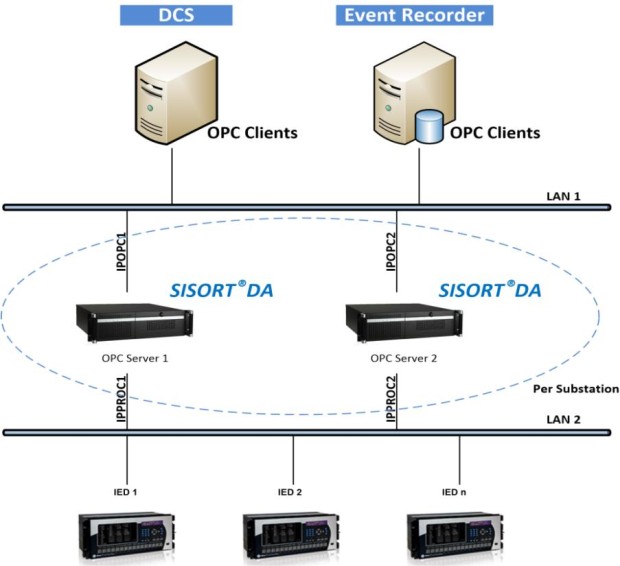by Philippe Maurin, Gustavo Ferraz, Eduardo Freitas, RD&I, ORTENG Equipamentos e Sistemas.

ORTENG is supplying the electrical and automation systems of 29 substations with 1,431 IEDs for oil refinery Abreu e Lima of Petrobras, which is being built at Ipojuca, Brazil. It will have the capacity to process 230,000 barrels per day. It is designed to have two main production lines; the first one started working in November 2014.
The electrical automation system is based on an ORTENG server solution called SISORT® DA (SISORT Distributed Applications). This solution is composed of many features, such as Internet, SMS, oscillography, alarm management, and others, and has a number of communication drivers, including OPC, IEC 61850, IEC 60870-5-101/ 104, DNP 3.0 and Modbus TCP.
Each substation has at least one SISORT DA system working in a redundant configuration with a total of 44 systems and a total of 80,000 OPC items. Each system has an OPC Server (SISORT-OPC Server) connected to at least two (and up to six) OPC Clients, including DCS OPC Clients and Event Recorder OPC Clients.
Each SISORT DA system is connected to up to 123 IEDs (protection relays with logic execution and Ethernet communication capabilities) and uses IEC 61850 Client MMS protocol driver (SISORT-IEC61850 Client) to supervise and control each IED. The COMTRADE IED oscillography files are retrieved automatically by another driver, SISORT-Oscillography.
The OPC exchange to the DCS OPC Clients and Event Recorder OPC Clients is guaranteed by the OPC Server DA 2.05a (SISORT-OPC Server). This last server makes all data of all drivers in a SISORT DA system available as OPC items without any configuration and allows protocol mixing.
Digital data (breaker position, statuses, protection statuses) are reported by the IEDs by exception (MMS buffered report) and analog data (active and reactive power, voltage, current, frequency, power factor) are reported periodically (MMS unbuffered report). These data are then sent by the SISORT-OPC Server using asynchronous reads to the DCS system and the Event Recorder OPC Clients.
The digital data that represents electrical protections and breaker positions are called “events” and each one is formed by a value, a quality and a timestamp of 1ms resolution, which tells the exact moment that the event occurred. Each time an electrical protection device is actuated by an overload, overcurrent, under voltage or trip, an event is generated.
When an electrical system instability occurs, a huge number of events are generated in a very short period of time. That happens because many IEDs may detect the fault and they will send this information to other IEDs, which will trigger their own protections and send this information to other IEDs and so on.
The Event Recorder OPC Clients store all the events generated during the instability so that the plant operators will be able to analyze the chronological order of the events and then determine the reason for the instability and its consequences. This is called SOE (Sequence Of Events).
The SISORT-OPC Server must send all SOE data accurately to the DCS, and particularly to the Event Recorder OPC Clients, which are able to recording those events. This is accomplished by an algorithm that allows up to 64 data variation OPC Item buffering. All events are then sent, one by one, in the same order they were originally reported by the IED through IEC 61850 MMS.
Because the OPC network and IED network are independent, this feature is also useful to sustain SOE delivery in different cases of OPC network failure. To guarantee that there is no missing event, each Event Recorder OPC Clients Group needs to have a 10ms scan rate. The SISORT DA SOE functionality was tested generating 1,200 events during a one-second interval and 12,000 during 24 hours. In both tests all events were successfully registered by the Event Recorder OPC Clients, which met all the requirements of power system, automation system and OPC specifications.
Due to the application of the SISORT DA OPC solution, all the power system data was successfully integrated into the DCS process system. This way, a big power system dedicated SCADA supervisory application was eliminated, saving hundreds of thousands of dollars on daily operation and maintenance costs. Due to the success of our OPC Server DA 2.05a, we are developing the SISORT-UA OPC Server and the SISORT-UA OPC Client (available first quarter of 2015) to gain flexibility and access to better technology offered by the OPC UA specification. For more information, contact suporte.sisort@orteng.com.br
